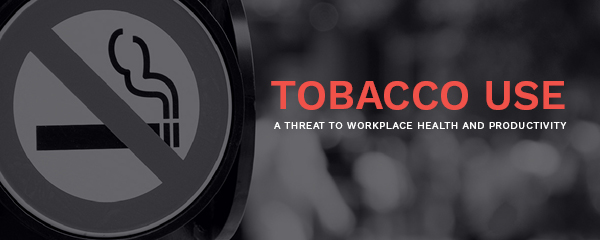You are here
Tobacco Use: Turning Workplace Challenges into Opportunities

When I was a child living in a small military town in South Carolina, my parents owned a restaurant that served authentic Italian pizza and submarine sandwiches. I still remember small details, like standing on a box to reach the cash register, and bigger details, like our family’s restaurant being smokefree. The memory of workers and other smokers stepping outside to light up is still vivid. It was the 1970s.
My parents operated a successful small business, but as director of the Centers for Disease Control and Prevention (CDC) Office on Smoking and Health, I realize they were more than business owners—they were leaders. I saw this in the way they treated their staff and in how they ran their business to provide a healthy, welcoming environment for their patrons and employees—including protecting them from exposure to harmful secondhand smoke.
Today, most people who work in bars, hotels, and casinos are nonsmokers. However, many of these individuals continue to be involuntarily exposed to secondhand smoke in workplaces that have not implemented smokefree policies. While we have made substantial progress in reducing tobacco use, nearly 40 million adults, and about 20 percent of the nation’s workforce, continue to smoke. In the United States, cigarette smoking remains the largest cause of preventable disease, disability and death. Smoking not only threatens employees’ health and well-being, but also results in decreased productivity, increased absenteeism, and increased workplace maintenance costs.
In light of these challenges, CDC joined with the CDC Foundation to launch Business Pulse: Tobacco Use to highlight ways employers can help improve employee health—and overall business health—by reducing tobacco use and secondhand smoke exposure. It’s important to note that these challenges related to tobacco use in the workplace can also be opportunities. Consider the following:
Opportunity #1: Decreased Costs
Smoking hurts the U.S. economy. It costs more than $300 billion a year in direct medical care and lost productivity.
Opportunity #2: Decreased Illness and Absenteeism
Smokers suffer more health problems and disability, and are more likely to miss days of work, than those who have never smoked.
Opportunity #3: Clear Indoor Air
About 20 percent of U.S. workers are exposed to secondhand smoke on the job. Exposure to secondhand smoke results in $5.6 billion a year in lost productivity in the United States. A smokefree work environment is essential to protect the health and safety of all workers. There is no safe level of exposure to secondhand smoke. As Nathan’s story emphasizes, below, the dangers of secondhand smoke can lead to serious health problems and even death for non-smokers.
Nathan’s Story: “I Never Smoked a Day in My Life.”
Nathan, a Native American and a former Tips From Former Smokers™ campaign participant, never smoked cigarettes. For 11 years, he worked at a casino that allowed smoking and was exposed to the dangerous chemicals found in secondhand smoke. The continuous exposure triggered asthma attacks, eventually causing permanent lung damage called bronchiectasis. "The casino was filled with smoke from so many people smoking," he said. Nathan's lung damage led to his death in 2013. He was 54 years old. Nathan hoped that sharing his story would help others, including business leaders, understand how dangerous exposure to secondhand smoke really is. Learn more about Nathan.
Opportunity #4: Less Damage and Expenses
Smoking increases the risk of fires and injuries, which can increase health and building insurance costs by up to 30 percent. The cost of cleaning and renovations for buildings where tobacco smoking is allowed can also increase. Tobacco use lowers the resale value of corporate property, such as fleet vehicles.
Opportunity #5: Worksite Cost Savings
Tobacco-free worksites save at least $728 per 1,000 square feet per year in maintenance costs for their office space. With U.S. commercial buildings averaging between 12,000 and 19,000 square feet, that’s an estimated savings of about $9,000 to $14,000 annually.
Take Action Now: CDC Can Help
Whether you own a “mom and pop” shop, restaurants like my parents’ or a larger business, everyone benefits when a worksite goes tobacco-free—even smokers. Employees become healthier, and healthier workers miss less work, are more productive and have lower health care costs.
As outlined in Business Pulse: Tobacco Use, there are many ways that CDC helps businesses protect employee health from the harmful effects of tobacco use. Businesses rely on CDC for strategic, evidence-based media campaigns to help employees who smoke to quit for good. CDC also provides many free resources for businesses and their employees, including guidance to develop and sustain tobacco-free workplace policies. We encourage all employers to explore Business Pulse for strategies and guidance to help protect employees from the harmful effects of tobacco use.